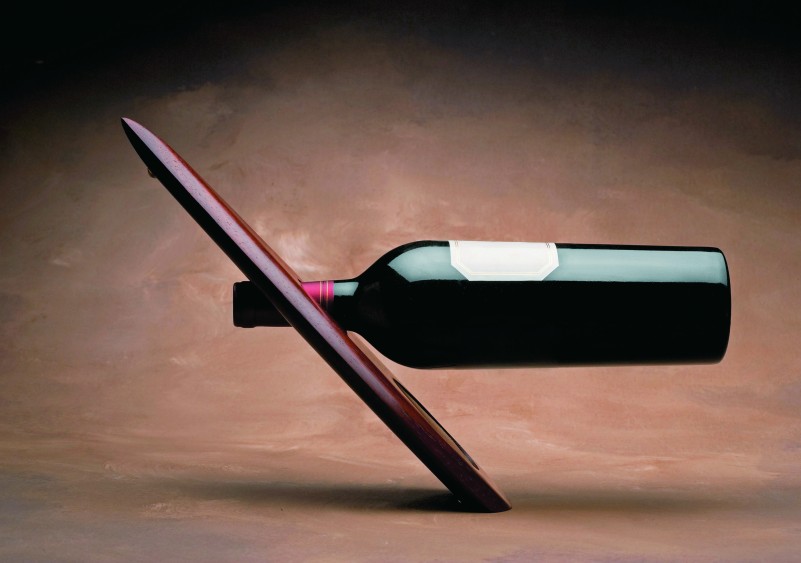THE TASTE AND SMELL TO APPRECIATE THE WINE
The tongue only feels if the wine is sweet, sour (on the sides), salty (in the front sides), or bitter (at the rear).
The volatile components (ethers and aldehydes) go up as vapour from the nostrils and from the back of the palate, up to the top of the nasal cavity. The humidity of this activity dissolves vapours and very delicate nerves take them to the olfactory bulb in the brain. Behind the olfactory bulb, there is the temporary bulb, the warehouse of our memory.
The olfactory sensations easily arouse memories, the experience is analyzed in the parietal lobe, and a judgement is formed in the frontal lobe.
The wine starts the brain and memories appear, but immediately a delicate balance of brain functions is imposed. Finally, the tasters spit the wine after obtaining all the information they need.
THE SIGHT
In the visual analysis you should pay attention to three basic aspects: colour, clarity and viscosity.
In the first case, the colour shows two aspects: the vivacity and intensity.
In red wines, the colours – generally ruby red – suffer significant changes over time. This situation allows us to know if a wine is young or old. In the young ones appear intense purplish red shades. In the old, brick, tile or brownish red shades appear.
In whites, the shades are greenish yellow, bright and lively. When a wine is oxidized, its colour turns to a dark yellow or opaque. In the rose wines, the predominant colour is the lively onionskin. When a rose is old, it becomes purplish pink.
The analysis of viscosity is done by observing the veil on the walls of the glass when the liquid is given a rotational movement. The content of alcohol or glycerine (element which the wines contain) is observed in the formation of “arches” on the walls of the glass with the downward movement of the liquid. These arcs are called “tears” of wine; the more intense and consistent are the arches, the higher the alcohol content.
THE SMELL
It has been proved that the smell is the most sensitive and comprehensive sense. A normal person accumulates up to 40,000 different scents in the memory and with practice, this person can have up to 100,000 (usually reached by those who are responsible for discovering the aromas of perfumes). Hence, it is often difficult to find the complex aromas of wine. However, with attention and concentration, these scents can be discovered. There are two ways of perceiving aromatics substances: aspiration directly and through the retro nasal route.
The direct aspiration is to smell repeatedly as to identify the different sensations. For retro nasal route, eliminating the wine of the mouth and exhaling so that the volatile substances pass through the olfactory system again.
When serving the wine, you should swirl the glass to release the aromas, which are concentrated in the body of the glass (that is why it is important to the glass to have a narrower mouth than the body) and after that you will be able to clearly perceive the aromas.
As the tasters insist, as the imagination plays a key role, it is not necessary that all drinkers find the same scents. “Everyone can be right, because wine is a complex beverage even with the resources” as indicated.
THE TASTE
The taste-sensitive cells are located on the tongue. There are four basic tastes: sweet, acid, bitter and salty.
The sweetness is perceived only by the tip of the tongue and the sensation of “sweetness” in the wine is due to the alcohol. The acid is perceived by the sides near the tip of the tongue.
Generally, high acidity is a characteristic of white and sparkling wines, because that gives the wine freshness and youth. In the reds, the acidity does not stand out.
The salt also is felt on the sides of the tongue, at its rear. It should be noted that alcohol and volatile substances in wine hide feelings of saltiness. The bitterness is easily felt and identifiable by the back of the tongue and is only discovered after swallowing. It is often found in white wines, because it is typical of some varieties of grapes or grapes that did not have an excellent state of health. In the reds, it might appear depending on the state of the grapes, its ripeness and also due to the type of wood used for aging.
Moreover, in the mouth there are other important sensations: the warmth and acidity. If there is much alcohol, there is the feeling of heat. If the acidity prevails, we will have a sense of freshness.






